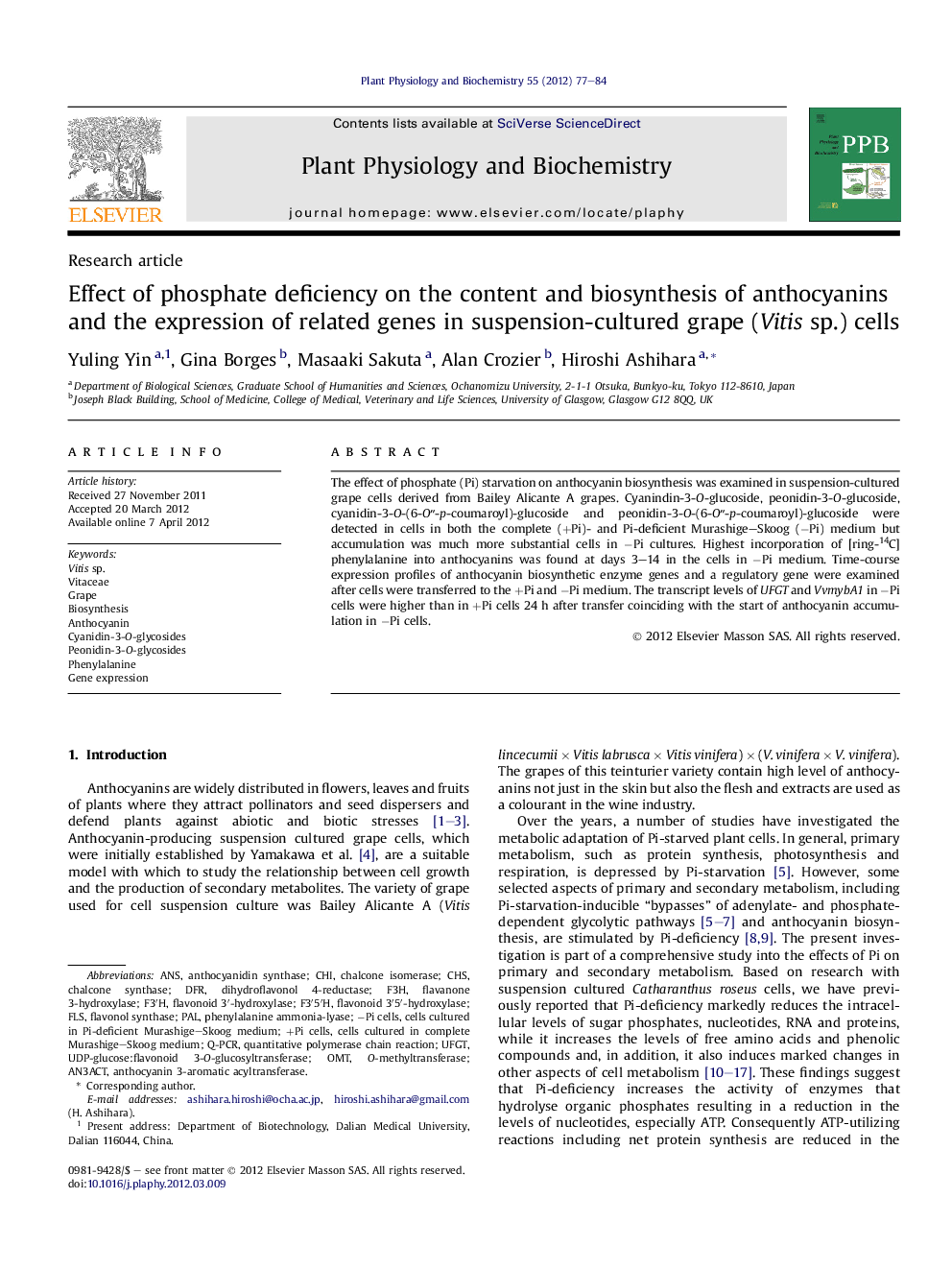| Article ID | Journal | Published Year | Pages | File Type |
|---|---|---|---|---|
| 2015063 | Plant Physiology and Biochemistry | 2012 | 8 Pages |
The effect of phosphate (Pi) starvation on anthocyanin biosynthesis was examined in suspension-cultured grape cells derived from Bailey Alicante A grapes. Cyanindin-3-O-glucoside, peonidin-3-O-glucoside, cyanidin-3-O-(6-O״-p-coumaroyl)-glucoside and peonidin-3-O-(6-O״-p-coumaroyl)-glucoside were detected in cells in both the complete (+Pi)- and Pi-deficient Murashige–Skoog (−Pi) medium but accumulation was much more substantial cells in −Pi cultures. Highest incorporation of [ring-14C]phenylalanine into anthocyanins was found at days 3–14 in the cells in −Pi medium. Time-course expression profiles of anthocyanin biosynthetic enzyme genes and a regulatory gene were examined after cells were transferred to the +Pi and −Pi medium. The transcript levels of UFGT and VvmybA1 in −Pi cells were higher than in +Pi cells 24 h after transfer coinciding with the start of anthocyanin accumulation in −Pi cells.
Graphical abstractFigure optionsDownload full-size imageDownload as PowerPoint slideHighlights► Suspension cultured grape cells accumulated four cyanidin and peonidin derivatives. ► Accumulation of anthocyanins was induced by phosphate deficiency. ► Larger amounts of [14C]-l-phenylalanine were incorporated into anthocyanins in phosphate-starved cells. ► Enhanced expression of anthocyanin genes was induced by Pi-deficiency.
